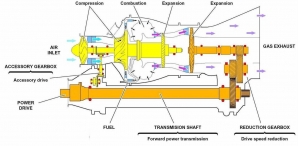Plans afoot to build 200 low cost airports
Tuesday, 11 March 2014 07:07
With India poised to become the fastest growing aviation market in the world in the next two decades, the government plans to build nearly 200 low cost airports.
Addressing the media in connection with the fourth edition of India Aviation Show, beginning here on March 12, Asok Kumar, Joint Secretary, Ministry of Civil Aviation, said the government was keen to expand the sector to the smaller cities in a bid to improve air connectivity, especially to Tier-II and Tier-III cities. At least four to five smaller airports from Andhra Pradesh, including those at Kadapa and Rajahmundry, were likely to figure in the list. Describing them as ‘low-frills’ airports, he said no decision had been taken with regard to private participation. At present, the non-metro airports accounted for about 30 per cent of the total air traffic, which was expected to rise to 45 per cent in the next few years. The Airports Authority of India was planning to invest Rs.1,500 crore in developing non-metro airports in the 12th Plan.
Though the aviation sector was passing through hard times, more than 10 applications were pending from various airlines with the government. Basically, the operation costs were very high and almost 70 per cent costs were “dollar-denominated.” Also, the cost of aviation turbine fuel (ATF) was quite high in the country with some States levying up to 30 per cent VAT.
Read more...Mumbai airport plans Rs 1,600-crore upgrade
Monday, 10 March 2014 09:16
A metro link improving access to the terminals, expansion of the new T2 terminal, a new taxiway and a tunnel under the runway for airside (the area within an airport’s passport, Customs control and security checks) vehicular movement are being planned in the second phase of the modernisation of the airport here.
The total cost for these upgrades, to be completed between financial years 2016 and 2019, is pegged at Rs 1,600 crore, including interest cost and the pre-operative expense of Rs 341 crore. Executives at the Mumbai International Airport Ltd (MIAL) outlined the development plans last week and will form an Airport Users Consultative Committee comprising airlines, the Airport Authority of India and other stakeholders.
MIAL did not respond to an email query.
The airport is the second busiest in the country but suffers from airside congestion, reducing capacity. The integrated T2 terminal opened for international operations in February; domestic operations will shift there next year. Its hub potential, too, is limited. The second phase of construction at the airport is aimed at improving both the connectivity to the terminals and boosting terminal & runway capacity.
This includes expanding the T2 by building the southeast pier that will let MIAL add seven passenger boarding bridges or aerobridges, taking the total to 29 bridges.
The proposed metro link to the airport as part of the Colaba-Santacruz Electronics Export Processing Zone (-Seepz) line will reduce the commute time between Colaba and the airport to 40 minutes from around an hour now. In the airport, three stations have been planned — one each at the domestic and international terminals and in the GVK SkyCity, a commercial hub being planned on airport land.
Our Packages



News & Events
Chennai International Airport completes its first phase of flood-proofing after deluge last year. Is it enough?
Monday, 14 November 2016 05:40
The employees of the Chennai International Airport can’t forget how water engulfed the tarmac on December…Nine flights diverted over Delhi smog
Monday, 07 November 2016 05:49
JAIPUR: Nine flights, including three chartered planes were delayed by 4-5 hours from landing in Delhi…From The Blog

